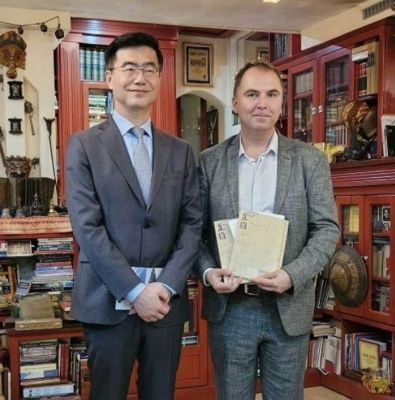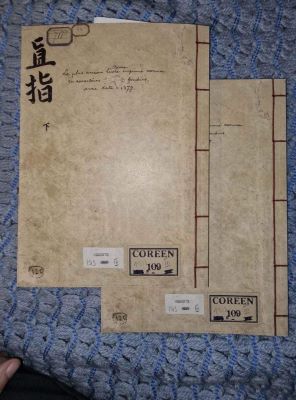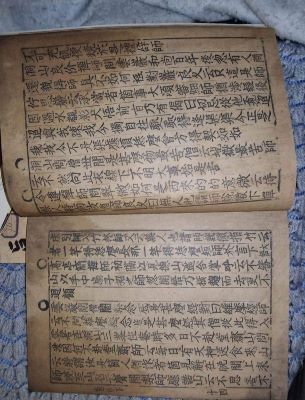
World’s first printed book with metallic letters displayed in Serbia

By Dr. Ana Stjelja
BELGRADE: The world’s first printed book with metallic letters was displayed in Adligat thanks to the embassy of South Korea.
In 1374, the Buddhist monk Baegun compiled the book “Gikji Simce Yodjol” (Anthology of Zen Teachings of Great Buddhist Monks) in South Korea to present the main teachings of Buddhism.
This unusual book is the world’s oldest surviving book printed with movable metal letters and is a UNESCO World Heritage Site.
The printing was completed by the monks Seoksan and Daldam in 1377 with the patronage of the nun Mydeok, at Heungdeoksa Temple in Cheongju City.
The phototype edition of this book was presented to the Association for Culture, Art and International Cooperation by H.E. Adligat. Ambassador of the Republic of South Korea, Jeung Lee, during his visit to the Museum of Book and Travel and the Museum of Serbian Literature, when he had the opportunity to see exhibitions of books by authors from all over the world.

The world’s first printed book was printed in two volumes 78 years before Gutenberg’s Bible (1452-1455), and the original of the second volume can now be seen in the National Library of France.
The only known original copy of the book was acquired by the French diplomat Colin de Plancy in Korea and taken to France in the late 19th century. At the World Exhibition in Paris in 1900, for which the Eiffel Tower was built, this book was displayed as the oldest printed book in the world. The Planci collection was purchased in 1911 by Henri Wever, who donated the book to the National Library of France in 1952.
Through painstaking restoration that lasted for years in Korea, the reproduction of the first volume was also done – both units in a phototype edition were presented to Adligat by the ambassador of South Korea. They will be on permanent display within the South Korea Collection of the Book and Travel Museum.
The discovery of this book confirmed data from Korean archival material, which mentions that the technology of printing metal letters was known throughout Korea as early as the beginning of the 13th century.
Long before Gutenberg, printing had spread across the Korean peninsula to such an extent that even local temples were printing books using this technology as early as the end of the 14th century. In Korea, the fact that the first metal printing technology appeared on their peninsula is considered a significant product of a long history and advanced culture.

“The world’s first printing press appeared as early as the 8th century when Korean monks printed their sutras – wrapped bundles of texts. In the Book and Travel Museum, we want to show the entire history of printing and the written word, and in that history Korea occupies one of the most important places.
“The excellence of Korean printing is an important part of human history and we thank Ambassador Jeung Lee for allowing us to show this treasure first hand to our visitors. How rich and ancient Korean culture is is also shown by the fact that this year the Korean embassy in Belgrade solemnly marked 4,356 years since the formation of the first Korean state”, said Viktor Lazić, president of Adligat.
UNESCO registered Đikđi in its Memory of the World program in 2001, and in 2004, a prestigious UNESCO award named Đikđi was established, which is awarded to individuals who contribute to the preservation and availability of priceless cultural traces of humanity. A festival dedicated to this book is being organized in South Korea.


